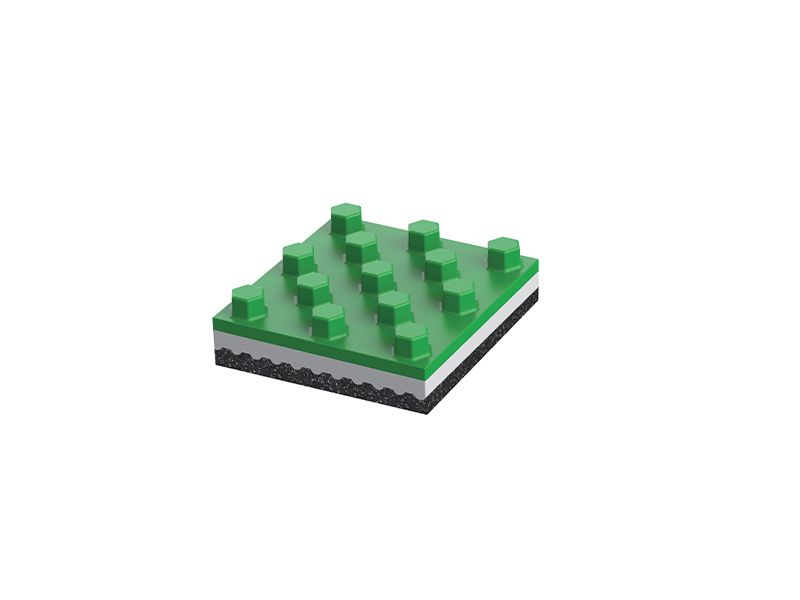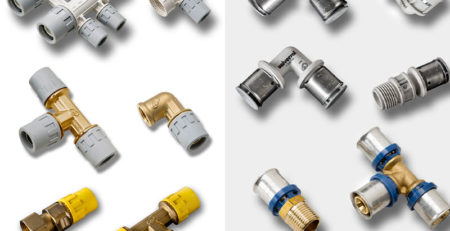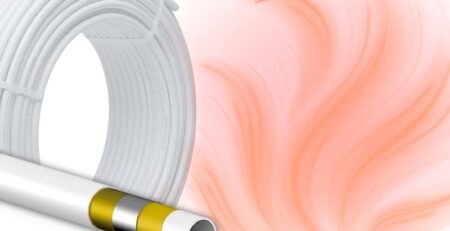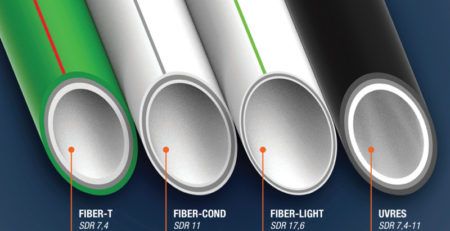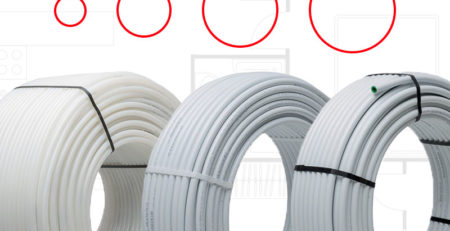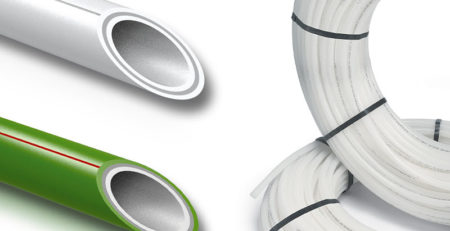The advantages of radiant floor systems for large rooms: the efficiency of valu-technik
Radiant floor systems are becoming more and more successful, thanks to the energy efficiency advantages and the attention to reduce the consumption related to environmental issues that characterize our days.
These heating solutions, born as early as the 1950s and 1960s, have developed over time with new technologies that have made it possible to achieve unparalleled environmental comfort in both the civil and tertiary / industrial sectors.
What is radiant heating
The general term of heating refers to the way in which heat is propagated from one body or environment to another. Traditional heating (radiators or fan coils) works mainly by convection, transferring heat through the movement of air. Radiant heating, on the other hand, works by radiation using electromagnetic waves to transfer thermal energy between two bodies. The heat then propagates through rays that start from the emitting surface (the radiant floor) and cross the room in a homogeneous way, being partly absorbed by objects and partly reflected, to then hit other objects, distributing the heat extremely evenly.
Its evolution
Radiant floor panels were introduced in the 1950s / 1960s, with a very different type of design and installation from the current one, which provided very distant wheelbases between the pipes (from 20 to 30 cm) and a very high fluid temperature (about 70 ° C). The consequence of these operating conditions consisted of extremely hot floors, with uneven temperatures and higher than those bearable for the perception of the well-being.
Another typical factor of the 1950s / 1960s systems was the use of single circuits for heating several rooms, thus preventing to differentiate the temperatures in the individual rooms.
Over time, several factors such as technological evolution, studies and development of new building materials and the renewal of the same design concepts have made it possible to overcome the limits of past systems.
All these improvements have led to the revaluation of radiant panel systems.
Today, in fact, the laying of pipes at a very close distance and the flow of water at a temperature between 25 and 40 ° C allow the environment to be heated, creating a comfortable and healthy habitat, while maintaining very low floor temperatures and inferior to the maximum limits set by the regulations.
The application of radiant panel technology is in fact among the most used and appreciated, as it is recognized as the best possible form of heating in terms of environmental comfort in the winter, and cooling in the summer. Aquatechnik has been offering for more than thirty years a complete, innovative and proven system for radiant panel systems: the valu-technik system, a complete range of pipes, insulating sheets, manifolds and regulation components.
The advantages of the valu-technik radiant floor system for large rooms
An environment with large dimensions can represent a challenge in terms of space to heat or cool. For example, think of structures with high ceilings, floors exposed to bad weather and large quantities of air infiltrations.
Yet, on balance, the radiant floor system represents the most advantageous solution in terms of savings and comfort.
Energy saving
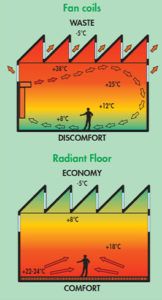
Thanks to the flowing of the fluid at low temperatures, operating costs are significantly reduced. Fuel savings can reach 50% compared to an air system.
The radiant system, exploiting the entire walkable surface, concentrates the heat in the bottom areas without upward dispersion, generating an almost linear thermal gradient.
The reduced heat losses make it possible to install a heat generator with significantly lower power than other types of systems, while still obtaining better comfort levels and reducing the energy that needs to be supplied to the system, with consequent economic savings.
Not only that: the system also makes it possible to exploit the heat coming from alternative energies, which allows a further reduction in heating costs and therefore can amortize the initial construction costs within a short time.
Another positive effect of fluid flow at low temperatures is the reduction of maintenance interventions, as the system components receive much lower stresses than traditional air conditioning systems.
Optimal comfort
Radiant heating spreads quickly and evenly, concentrating where it is really needed by the human body and creating a physiologically optimal climate.
More hygiene
Less dust and better indoor air quality are some of the significant advantages offered by valu-technik, thanks to the absence of convective motions. The absence of combustion of atmospheric dust reduces the risk of allergies, ensuring healthy environments and excellent hygienic conditions.
Less bulk and aesthetics
Thanks to the elimination of the constraint of the heating bodies, it is possible to recover technical space usually used for traditional heating, allowing you to take full advantage of all the room and avoiding possible injuries due to collisions with radiators.
Eco-friendly solutions for heating
The energy-saving advantages of the Aquatechnik valu-technik system are also crucial in terms of sustainability. The high exchange surface of the underfloor heating allows to operate with the heat transfer fluid at a very low temperature, recovering and better using the heat coming, for example, from heat pumps and solar energy, with a further reduction in heating costs.
Radiant panel systems are an eco-friendly solution, in line with our philosophy of safeguarding the planet: Aquatechnik has always operated according to processes with low environmental impact, with recyclable raw materials and according to ISO 14001, in an integrated Quality and Environment company system.


